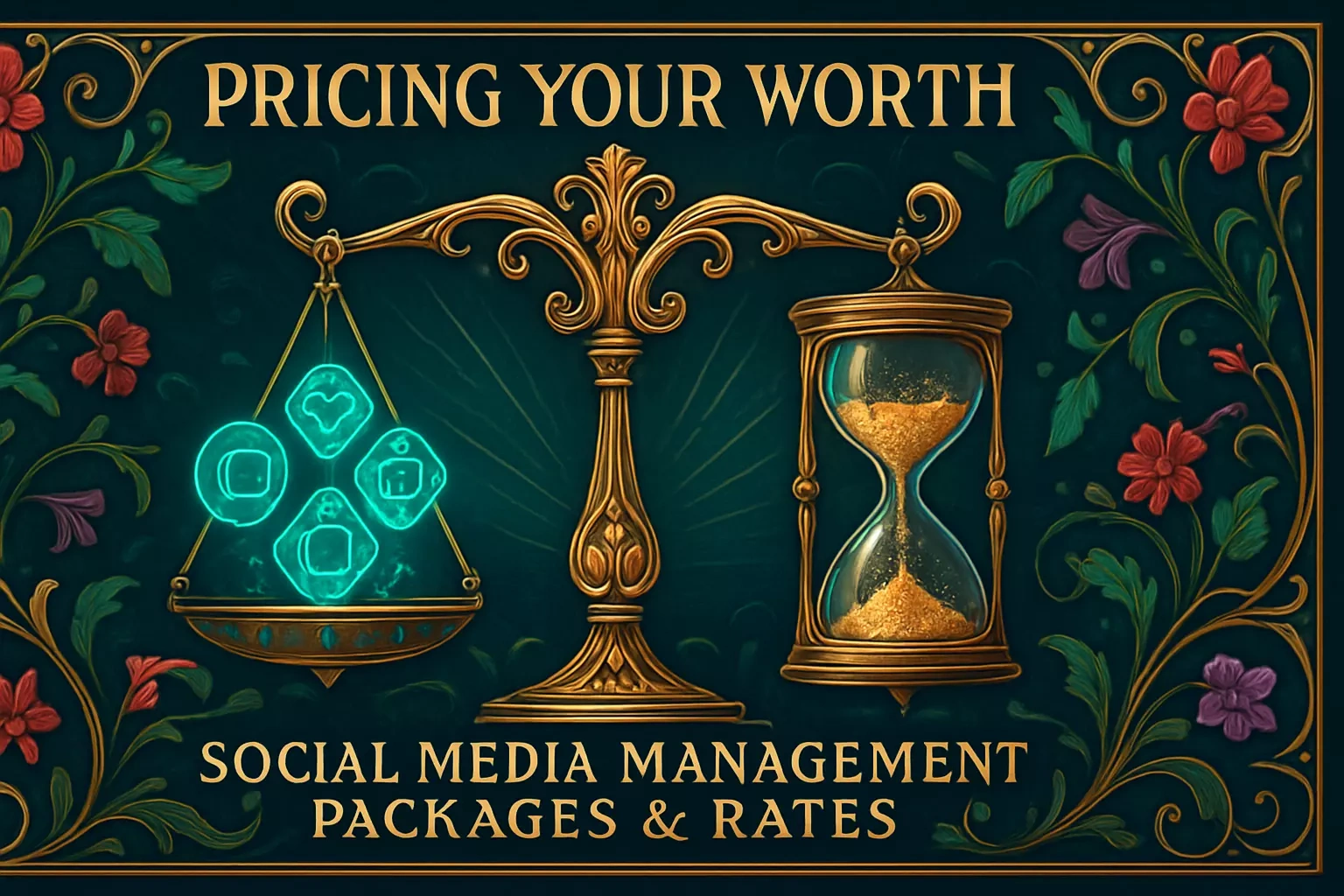Pricing Your Worth: Social Media Management Packages & Rates

Pricing Your Worth: Social Media Management Packages & Rates
Understanding Different Pricing Models
Hourly Rates
Project-Based Pricing
Monthly Retainers/Packages
Value-Based Pricing
Factors to Consider When Setting Your Rates
Your Experience and Expertise Level
Scope of Work and Services Offered
Client's Budget and Industry
Your Business Overheads and Income Goals
Market Rates and Competitor Analysis
Creating Attractive Social Media Management Packages
Defining Tiers (e.g., Basic, Standard, Premium)
What to Include in Each Package
Clearly Outlining Deliverables and Value
Optional Add-ons and Customization
Communicating Your Pricing and Value
Creating a Professional Rate Sheet or Pricing Page
Articulating the ROI of Social Media Management
Handling Price Objections and Negotiations
When and How to Raise Your Rates
Conclusion
References
Pricing Your Worth: Social Media Management Packages & Rates
Understanding Different Pricing Models
Hourly Rates
Project-Based Pricing
Monthly Retainers/Packages
Value-Based Pricing
Factors to Consider When Setting Your Rates
Your Experience and Expertise Level
Scope of Work and Services Offered
Client's Budget and Industry
Your Business Overheads and Income Goals
Market Rates and Competitor Analysis
Creating Attractive Social Media Management Packages
Defining Tiers (e.g., Basic, Standard, Premium)
What to Include in Each Package
Clearly Outlining Deliverables and Value
Optional Add-ons and Customization
Communicating Your Pricing and Value
Creating a Professional Rate Sheet or Pricing Page
Articulating the ROI of Social Media Management
Handling Price Objections and Negotiations
When and How to Raise Your Rates
Conclusion
References
Posted Jun 11, 2025
Determine the right pricing for your freelance social media services. Explore different models, learn how to create attractive packages, and confidently charge what you're worth.






